WWII Shipwrecks
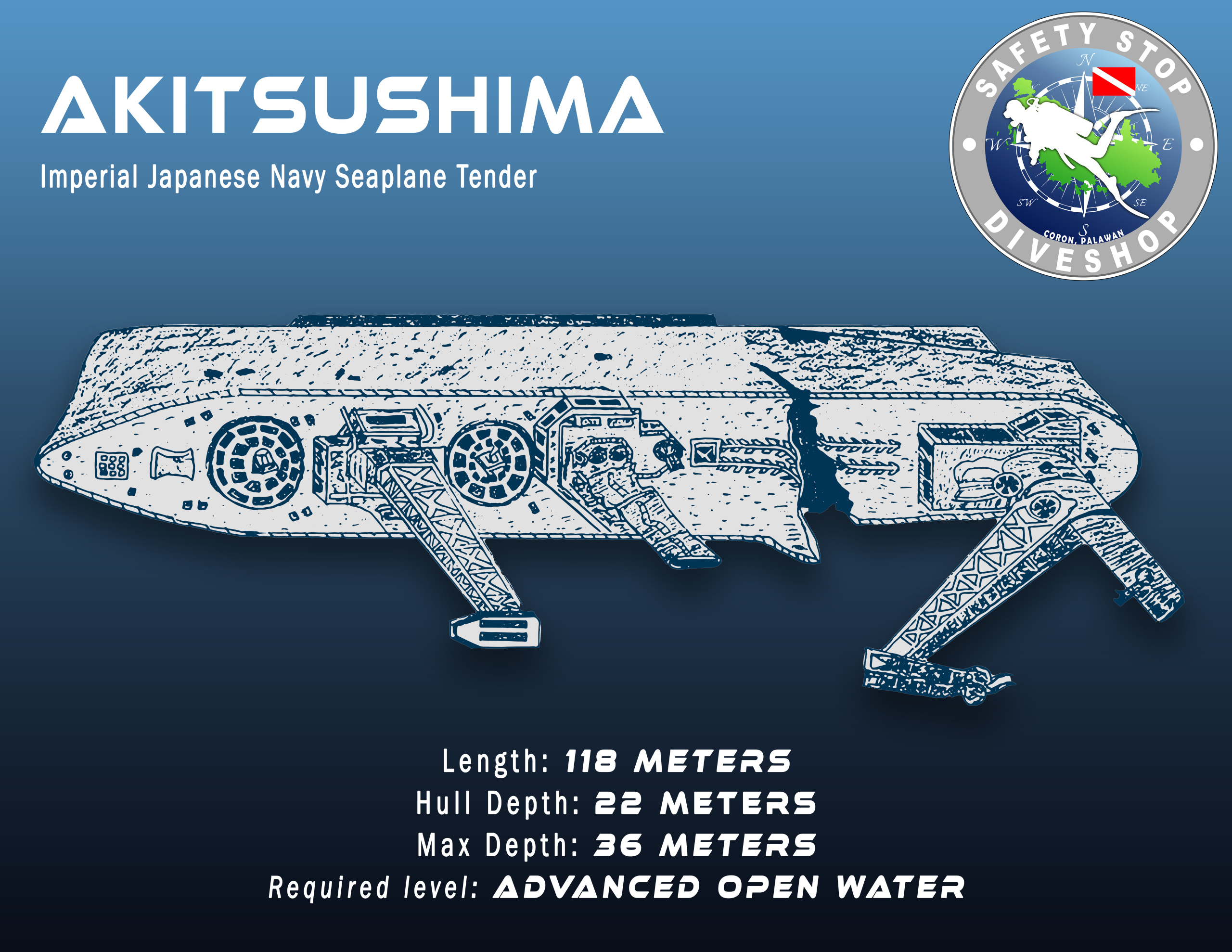
Akitsushima
Seaplane Tender of the Imperial Japanese Navy Combined Fleet in WWII
Sunk: September 24, 1944 by U.S. Air Raid
The Akitsushima is a large warship that is positioned on her port side. She was suddenly hit towards the stern, where the flying boat was resting on the metal tracks, and quickly sank. The ship was almost ripped apart. Only half of the metal on the ship’s starboard side and half of the metal on the ship’s bottom saved the stern from separating from the rest of the ship. The crane used to lift the seaplane out of the water is still in place. The crane is laying on the sandy bottom, attracting schools of huge batfish and barracudas. A 3-barreled AA (anti-aircraft) gun installation remains at the front of the flying boat tracks.
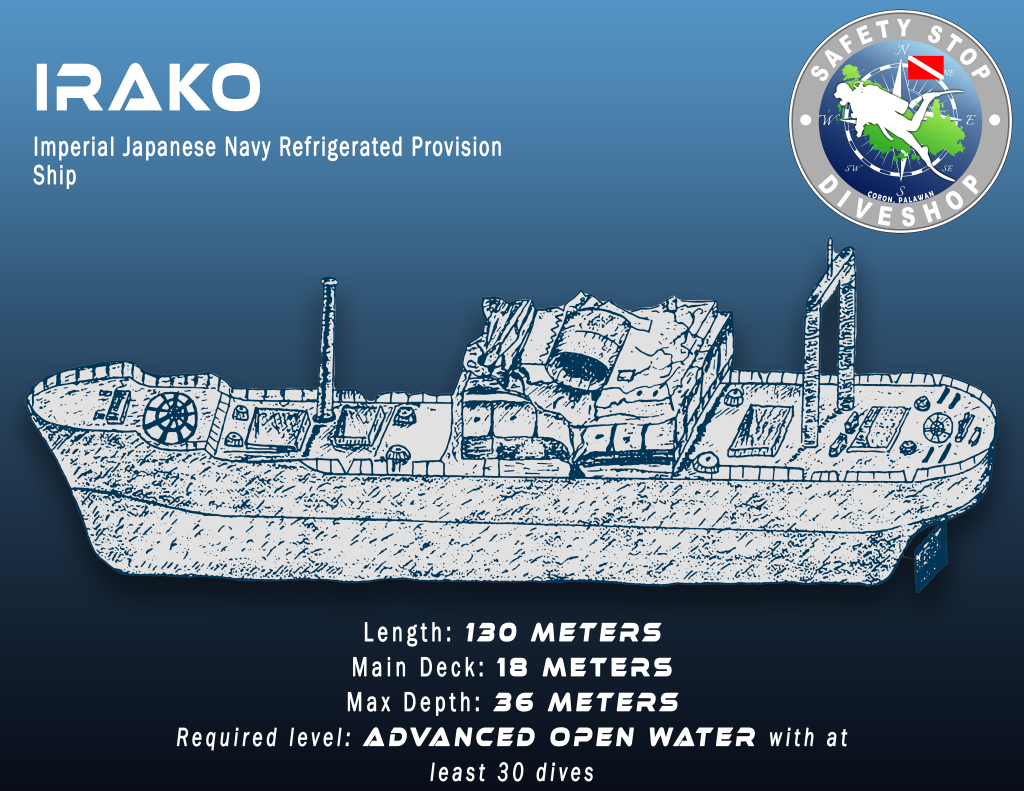
irako
Provision Ship of the Imperial Japanses Navy Combined Fleet in WWII
Sunk: September 24, 1944 by U.S. Air Raid
Irako Maru was a refrigerated provision ship built in 1937 to specifically support extended fleet operations – able to supply food for 25,000 personnel for two weeks. She sustained multiple hits on the upper deck amidships, caught fire and sank slowly with many casualties.
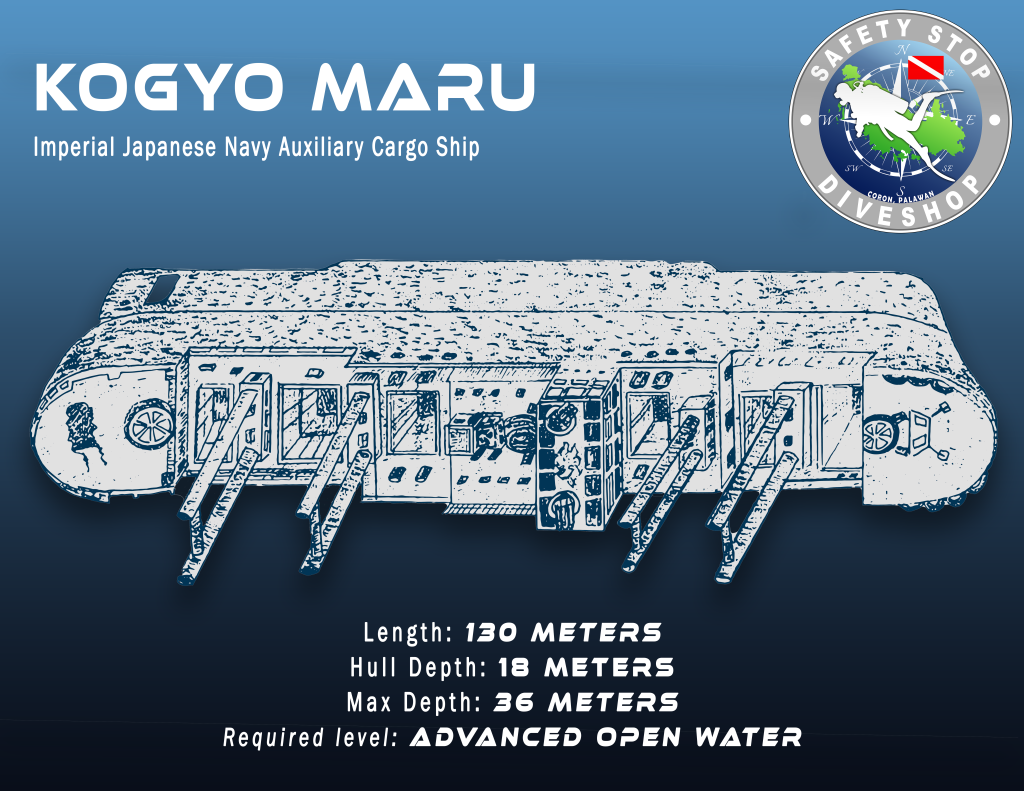
kogyo maru
Auxiliary Cargo Ship of the Imperial Japanese Navy Combined Fleet in WWII
Sunk: September 24, 1944 by U.S. Air Raid
The Kogyo Maru, was a Japanese freighter carrying construction materials for building a runway for the Japanese war effort in the Pacific. Kogyo Maru’s second hold contains an incline of cement bags which tumbled as the ship sank. Complete but encrusted, you can imagine the operator sitting in the seat and working the control levers to carve a runway out of a tropical island. Engrossed in the bulldozer you might fail to look up the incline of cement sacks and so miss the tractor and air compressor perched above it.
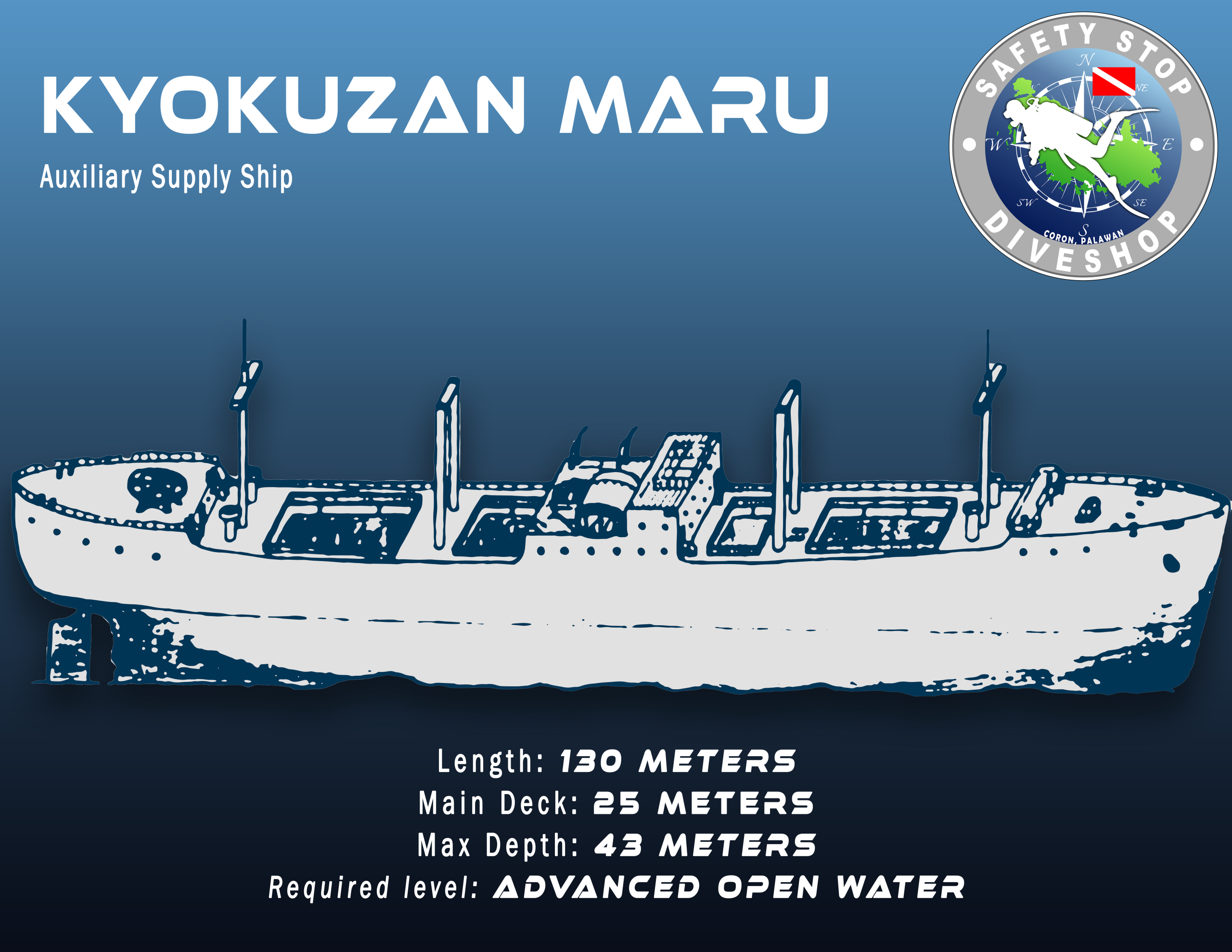
kyokuzan maru
Auxiliary Supply Ship of the Imperial Japanese Army
Sunk: September 24, 1944 by U.S. Air Raid
Located near small islet called Dimalanta at the north coast of Busuanga, she was with another 2 cargo ships during the U.S. air which obviously managed to escape. The ship was hit on port side after three or four very near misses. However the vessel did not sink due to the bombing hull, cargo holds as well as engine room are still intact and lifeboats davits have been swung out. It is assumed that the crew scuttled and abandoned the ship later on.
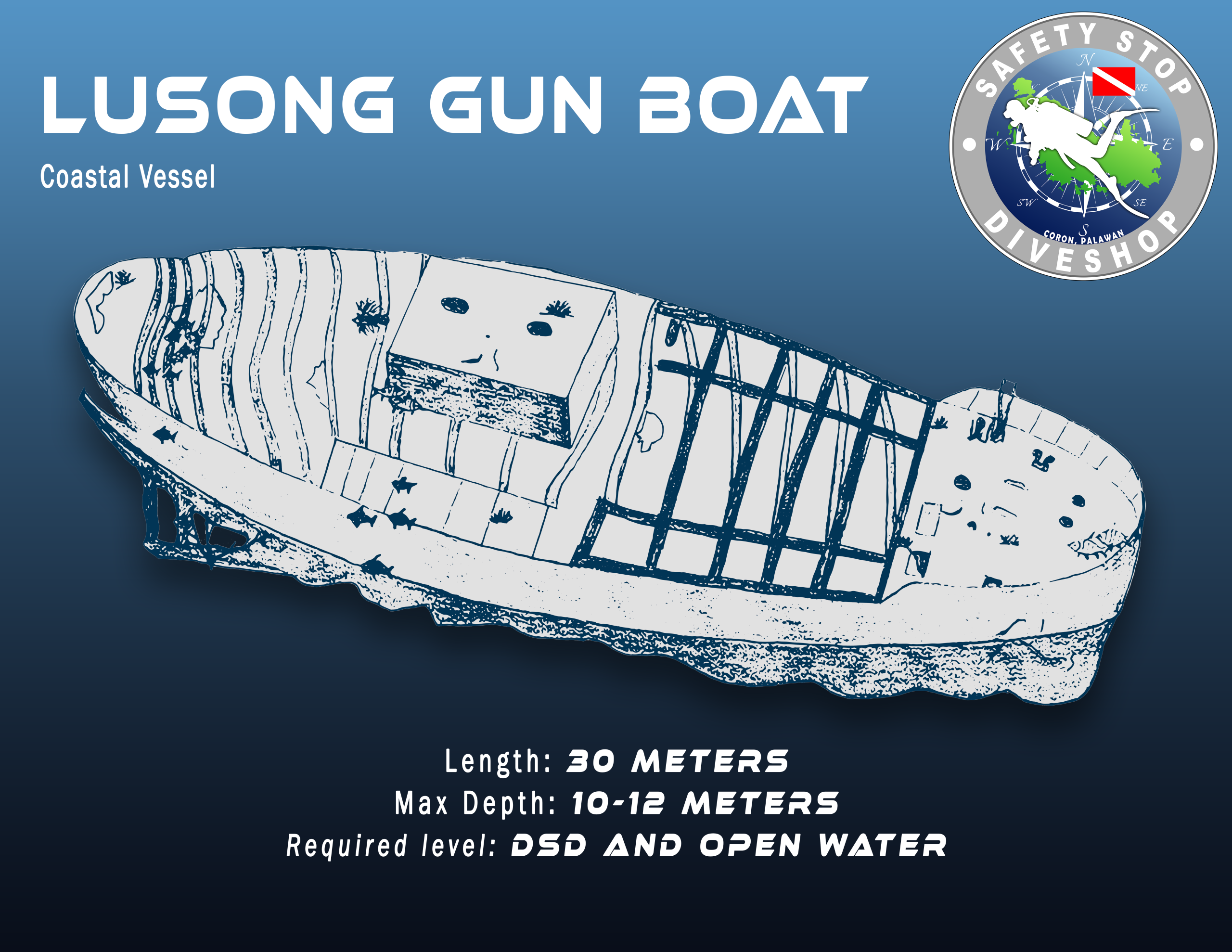
lusong gunboat
It is one of the wrecks that can be seen by snorkeling and ideal for Open Water Divers because of its shallow depth. It is pretty easy to navigate.
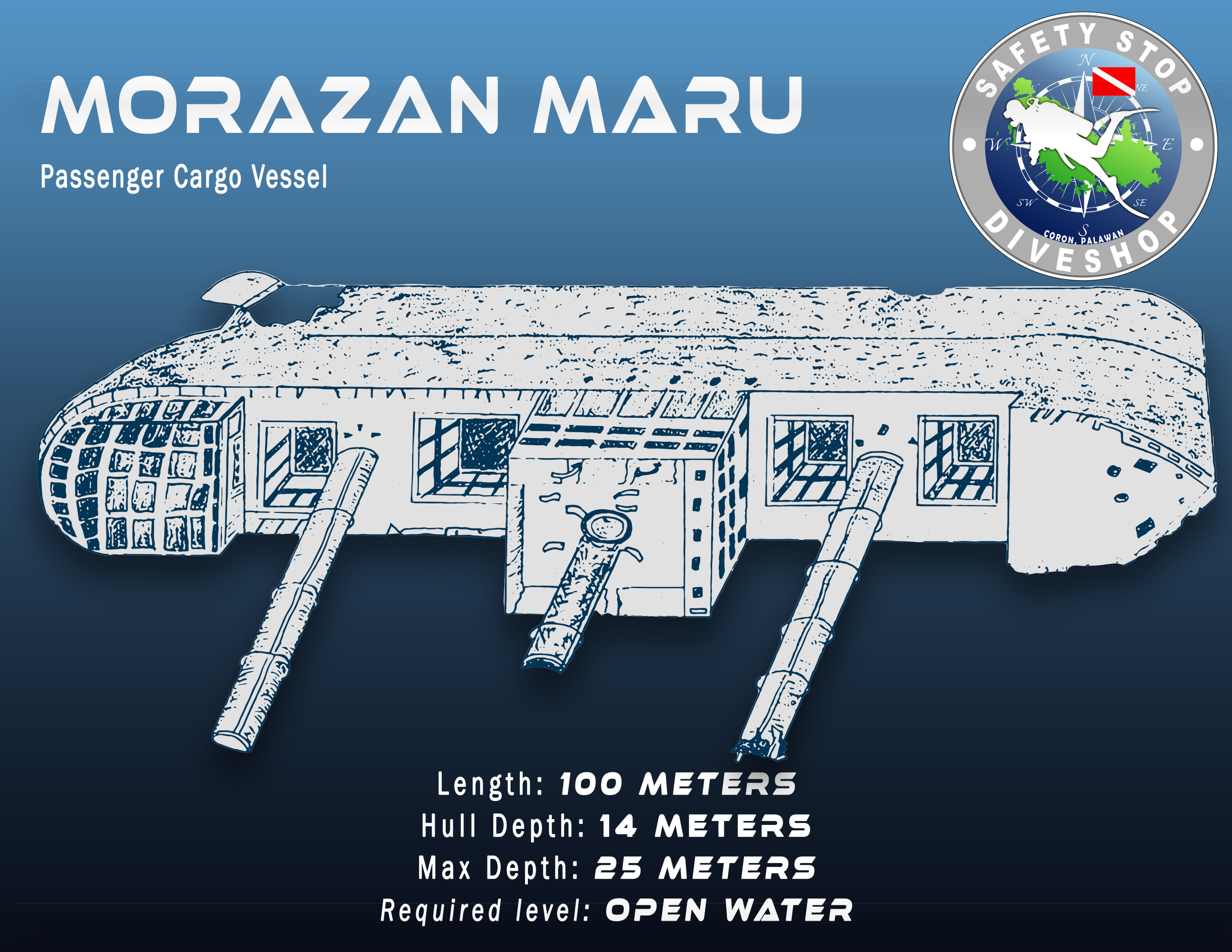
morazan maru
Auxiliary Supply Ship of the Imperial Japanese Army
Sunk: September 24, 1944 by U.S. Air Raid
It was an English-built freighter in 1908 seized in Shanghai in 1941 and put to use as auxiliary vessel. Some speculation exists that it is very similar to Taei Maru and that was sunk in Manila Bay. Even Japanese war records were confused in identification – up to 6 freighters were named Taei Maru during the course of war. Either way,, one lies in Manila Bay and other in Coron.
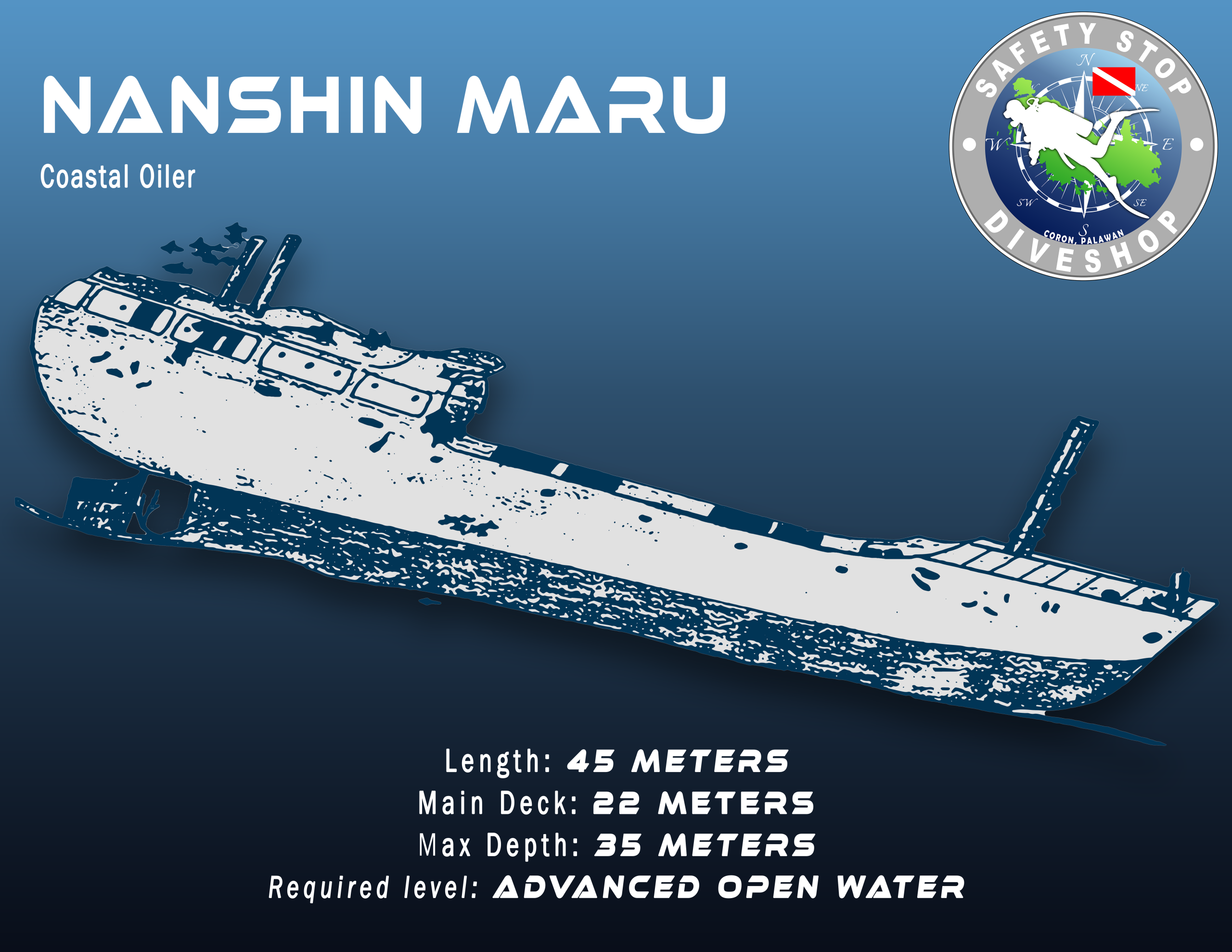
nanshin maru
A small tanker converted to carry specific fuel (gasoline, lube oil etc.) In small isolated tanks for replenishment of land-based depots.
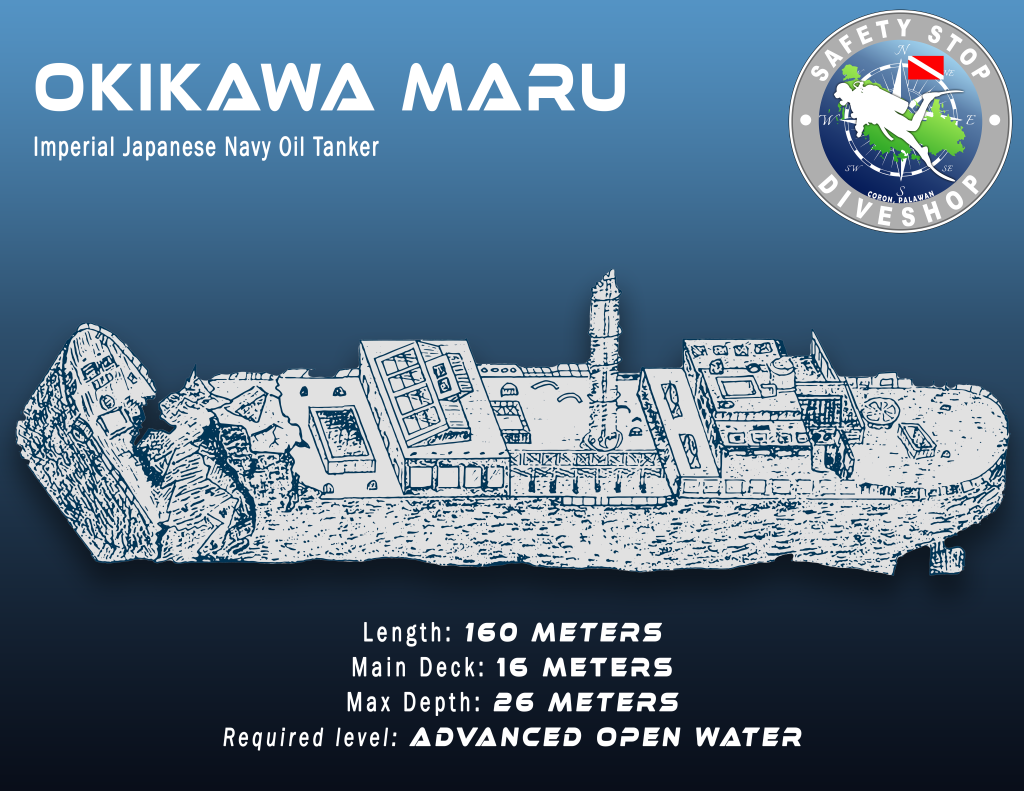
okikawa maru
Auxiliary Oiler of the Imperial Japanese Navy Combined Fleet in WWII
Sunk: September 24, 1944 by U.S. Air Raid
The largest shipwreck in Coron Bay. It was sustained massive damage from the U.S. air attacks, it was burned for nearly 3 weeks and was eventually sank after a further attack on October that same year.
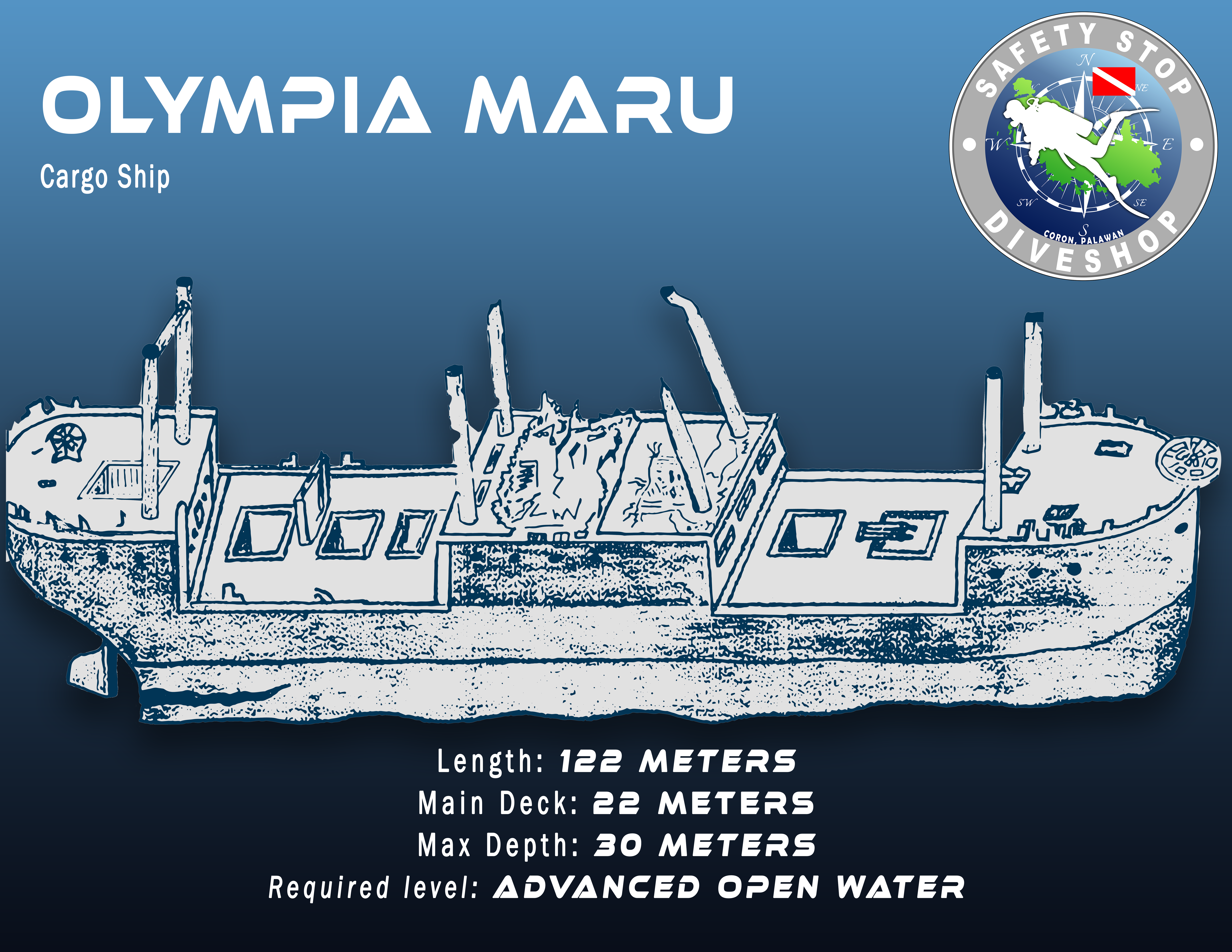
olympia maru
Auxiliary Cargo Ship of the Imperial Japanese Army in WWII
Sunk: September 24, 1944 by U.S. Air Raid
This Shipwreck is another source of debate over her origin. Originally and most commonly known as “Tangat Wreck” due to its close proximity of Tangat Island, it’s maybe either Olympia or Taei Maru. The ship is a frieghter, and if indeed it is Olympia Maru, it was built for Mitsubishi Shoji Kaisha Ltd. but during WWII by the Japanese Imperial fleet. Originally powered by steam engines, she was upgraded to two-stroke, six cylinder engines during the 1930’s.
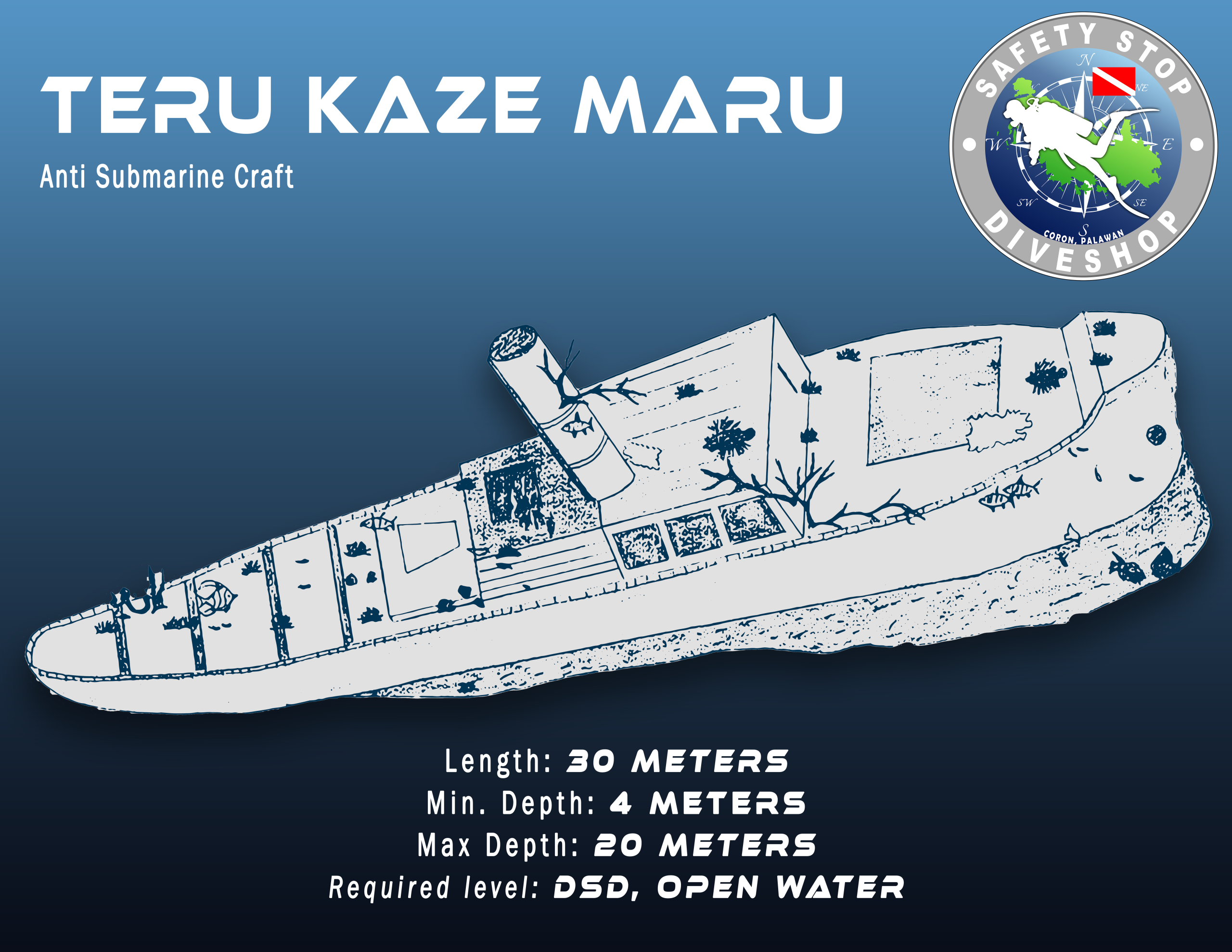
teru kaze maru
Presumed Auxiliary Anti-Submarine Craft and Tugboat of the Imperial Japanese Navy Combined Fleet.
Sunk: September 24, 1944
Also known as the “East Tangat Wreck” due to her close proximity to the east-shore of Tangat Island, her original Japanese name is Terukaze. The crew of this boat most likely scuttled it after the air-raid because it is so close to the shore and there are no big damages. Together with Lusong-Gunboat it was one of the easiest wrecks of this fleet for locals as well for the commercial salvage-company (and later on for divers) to salvage all valuable items out and off.
